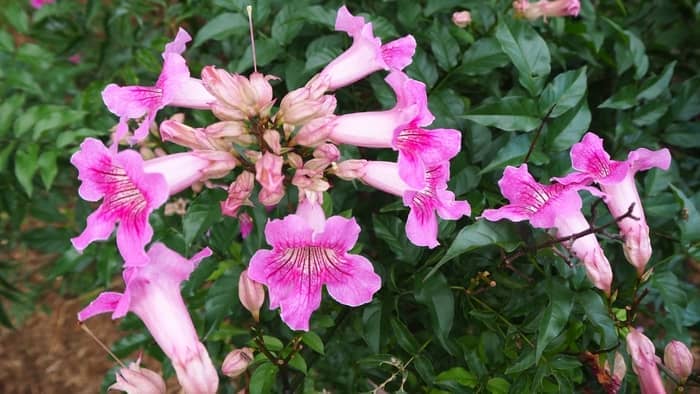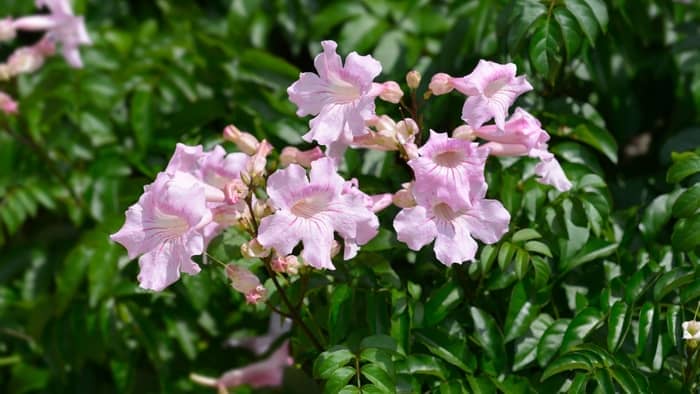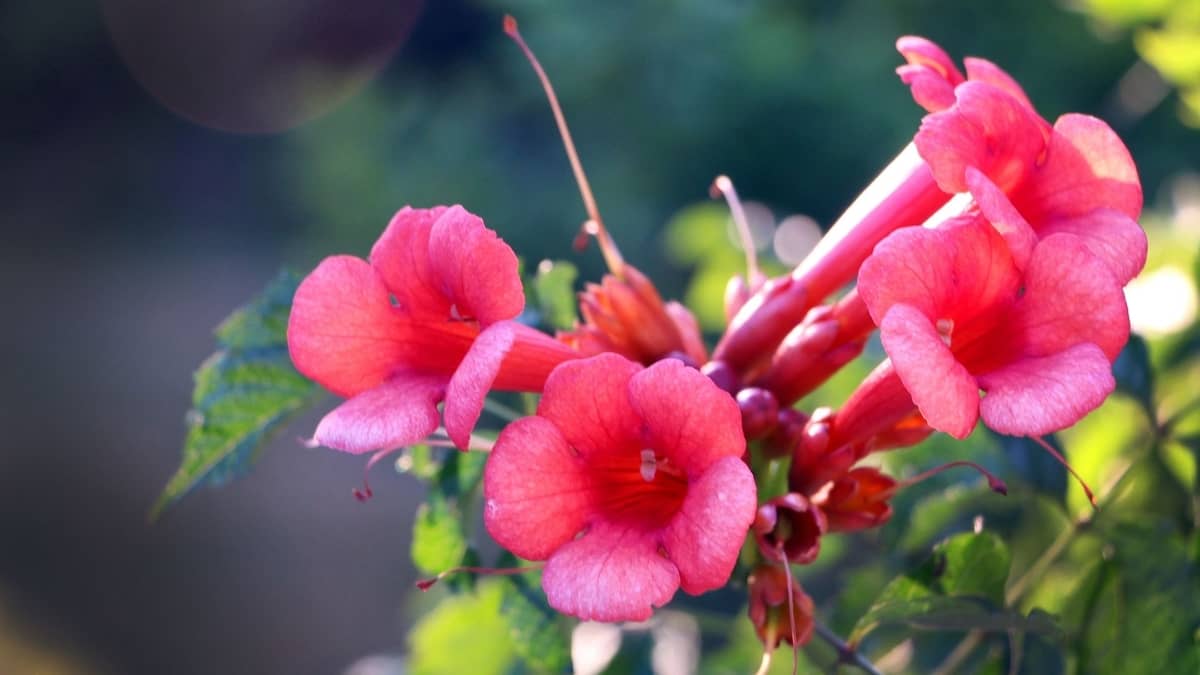When does trumpet vine bloom? Do you know the answer to this? The trumpet vine is a deciduous shrub that climbs with the aid of aerial rootlets. The vine usually produces a trumpet-shaped orange-colored flower. If you are someone interested in having a bright-colored vine in your garden, then this is a very viable option to consider.
This vine also has a particular attention of bird lovers. This is because small birds such as hummingbirds are usually attracted to it. Therefore, you get the benefit of watching birds feed on the flowers of the vine and also get to have the pleasure of the aesthetic advantage the vine offers.
The trumpet vine however in some instances has a very long growing period before blooming and producing flowers. This has been a cause of concern for many growers of trumpet vine.
This article considers the likely timeline before blooms may be expected for trumpet vine under proper conditions. The reasons why trumpet vines don’t bloom when they ought to and how to help with this problem are also considered.
Before we get into all of the above, let’s consider growing trumpet vine and the expected bloom time under normal conditions.

Growing Trumpet Vine
When growing trumpet vine, these are a few very important tips you should put into consideration for the best possible result:
- Soil: When growing this plant, you can pick from the following soil options: sandy, loamy, and clay soils. The plant can perform well in any of the said soil types. It is however important that the soil is well-drained.
- Water: The plant likes a moderate amount of soil moisture. It however has tolerance for drought where such occurs. But even in places with very little water supply, the plant can still grow, you only need to give them sufficient water to prevent withering.
- Fertilizer: The plant is a prolific and aggressive spreader with the ability to spread to areas where they are least expected. Therefore, it has the ability to thrive in lean soil, with very little soil nutrients. The use of fertilizer is generally not recommended for this plant.
- Sunlight requirement: Trumpet vine can grow in full sun or even in partial shade. However, where flowering is desired as quickly as possible, it is best to plant in full direct sunlight. This will help hasten the process of flowering.
- Trumpet Vine Care: This plant is an aggressive spreader, and as such can quickly blanket fences, trellises, and other structures. Although the maintenance of this plant is relatively cheap and less stressful, you must be willing to constantly prune the plant to control growth.
When Do Trumpet Vines Bloom?
The trumpet vine will usually begin to bloom in mid-summer and continues to bloom in very early autumn. This means you are likely to find a Trumpet vine bloom between the months of July and September in the year.
The plant however needs to reach maturity to flower and this takes quite a lot of time. It may take from five to seven years before the plant begins to bloom or even ten years in some instances. Different factors would come into play to determine how long you may need to wait before the plant blooms.
Read more about Hummingbird Food Chain

Factors That Affect The Blooming Of Trumpet Vine
Trumpet Vine will ordinarily not bloom until maturity is attained by the plant. It usually takes quite some time for maturity to be obtained. Whereas the plant may take as long as ten years to bloom, some factors can be put in place to make this possible in a shorter time.
The following are a few factors that affect the blooming of a trumpet vine:
- Sunlight: Sunlight is very important to the growth and development of this plant. Where it is exposed to full sunlight for most of the day, it matures more quickly. Where possible move the plant to a full sun location to reduce the blooming time.
- Nutrients addition to the soil: This plant requires very little nutrients to thrive. Supplementing the soil with additional nutrients may thus not be necessary. Where the plant is planted in a place with high nitrogen content, this may encourage leaf and stem growth and discourage blooming.
- Horizontal branch growth: If you are able to train the main branches to grow horizontally instead of vertically, the plant is more likely to bloom very early. Pruning should however be done in late winter or early spring before the leaf begins to appear.
- Too much care: You may be surprised by this, but paying too much attention to the plant by constantly watering, adding fertilizer and pruning may increase the blooming time. So you are likely to notice a bloom in a neglected trumpet vine quicker than a pampered one.
Controlling The Spread Of Trumpet Vine

Trumpet vines are prolific and aggressive growers. They are also a vigorous climber, with the ability to climb 40 feet and more. Once the plant gets fully established, it becomes a bit difficult to control its growth patterns.
The plant is usually spread in three major ways: through its seed, by its roots/ stem touching the ground, and by underground runners. One of the potent ways of controlling the growth of the plant is by pruning. This should however be done in early spring when leaves are yet to appear fully.
You can also control the growth of the plant by removing seeds through regular deadheading. Also, regular mowing will help deter shoots from the stubborn underground runners that usually come up in turf areas.
You can also decide to cut off and uproot offshoots in garden beds as they appear. Kindly remove the shoots just as you do with your routine garden weeding to keep the plant abbey. By planting in a container with the bottom removed may also help contain runners.
Conclusion
Trumpet Vine is a peculiar plant with very beautiful flowers that can attract beautiful birds to your garden and yard. The plant is however an aggressive growing and climber and requires serious attention when growing.
Trumpet Vine does not have an early maturity period, as it usually takes as much as five to ten years before it matures. You should consider all of these carefully before growing this plant.
FAQs
[rank_math_rich_snippet id=”s-3167ee5b-2997-49b7-8164-b58f72561490″]

